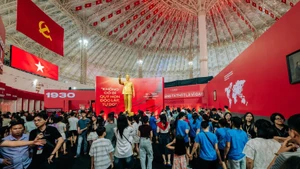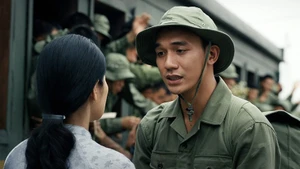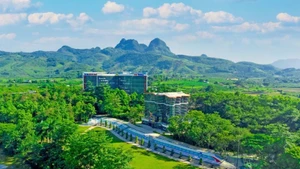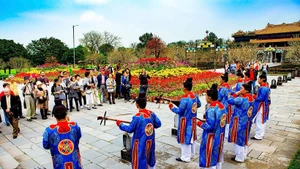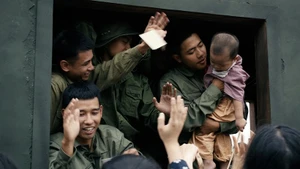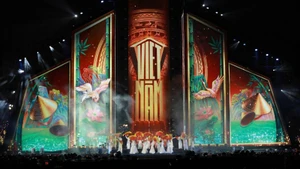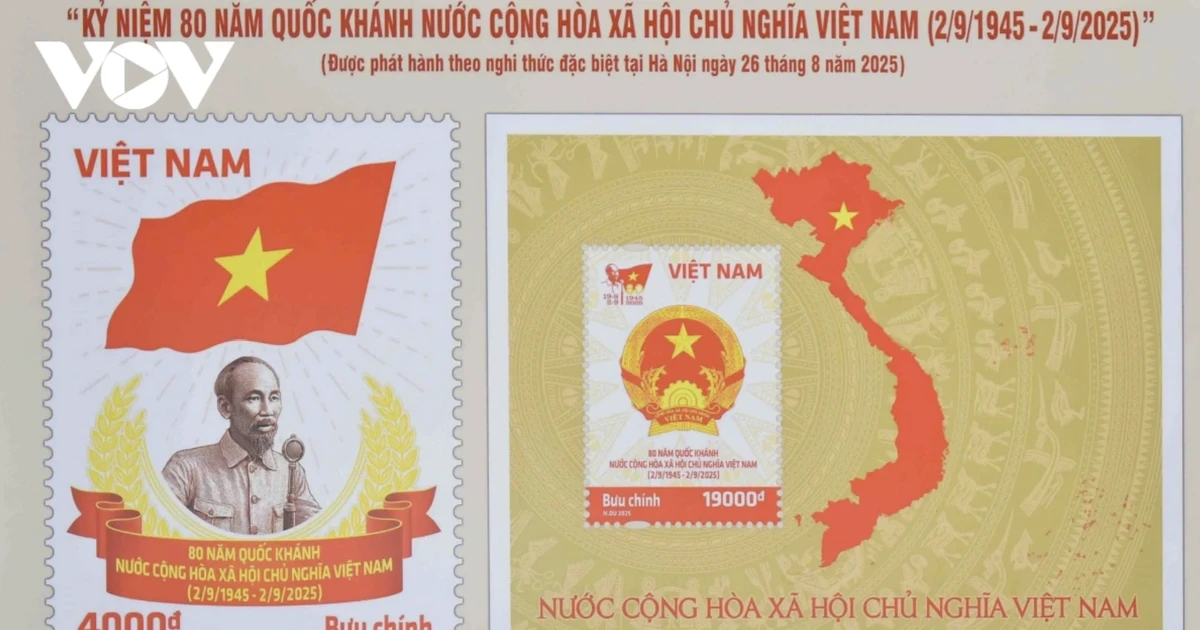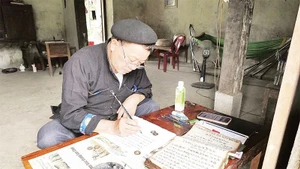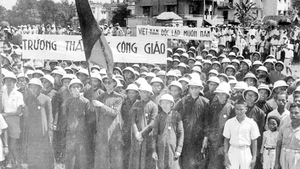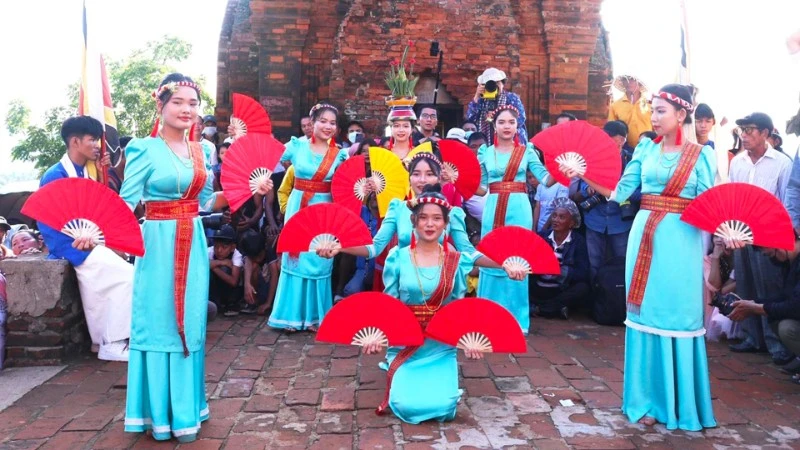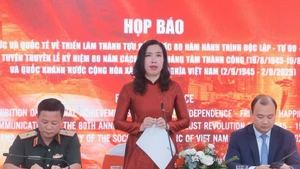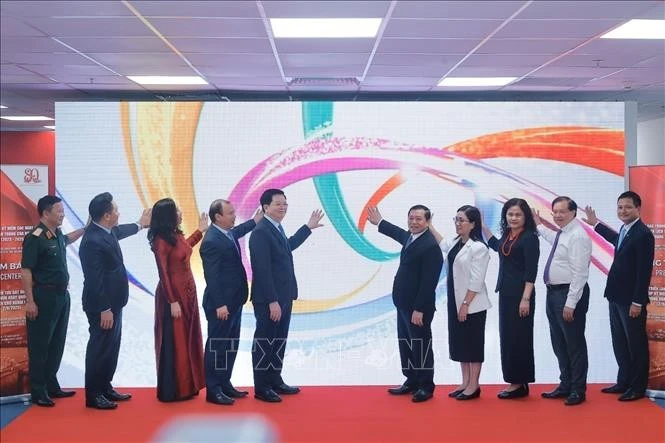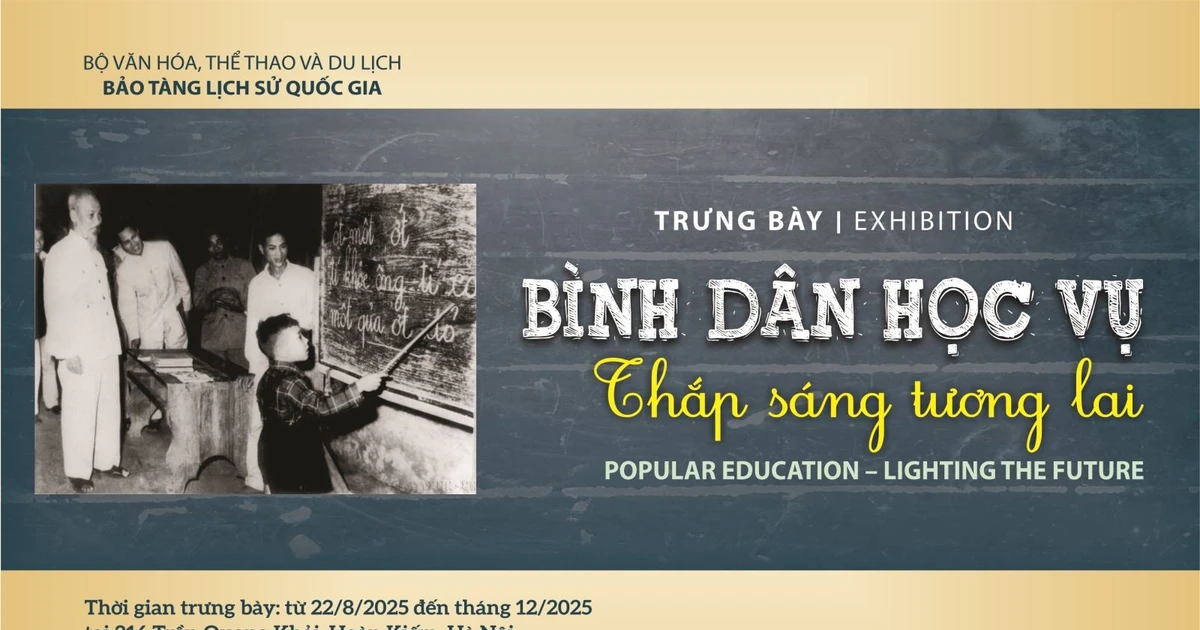In recent years, many politically themed artistic programmes, especially those commemorating national holidays, have undergone a significant shift in creative thinking and production style. Here, the language of art is no longer merely decorative or illustrative of political content, but a true medium for conveying profound messages. It allows historical moments and the national spirit to resonate with audiences in a way that is both authentic and emotionally powerful.
The years 2024 and 2025 have marked numerous major historical milestones for the nation, offering the public a chance to experience large-scale commemorative programmes enriched with artistic technologies. One outstanding example is “Dien Bien Phu – A Historic Golden Milestone”, held at May 7 Square in Dien Bien Phu City, Dien Bien Province, to commemorate the 70th anniversary of the victory that “resounded across the five continents and shook the globe.”
The combination of symphonic music, dramatic re-enactments, dance, and modern lighting technology painted a vivid picture of the entire campaign. Images of hundreds of soldiers pulling artillery, bicycle convoys transporting supplies, and more created a grand and solemn atmosphere.
Another highlight was “Spring of Reunification”, marking 50 years since the Liberation of the South and National Reunification, staged at the Innovation Park in Ho Chi Minh City. Beyond portraying historical turning points, the programme became an emotional symphony interwoven with narration, music, dance, archival footage, and carefully choreographed stage scenes—evoking the flow of history in a natural and moving way.
Held in Ba Dinh Square, Ha Noi, “He is Ho Chi Minh” programme commemorated the 135th birth anniversary of President Ho Chi Minh and left a lasting artistic impression. The ideological journey, soul, and legacy of the President were vividly portrayed through music, poetry, dance, dramatic staging, and visual projections—guiding audiences from remembrance to reflection, from gratitude to a yearning to learn from, dedicate to, and follow his example.
Equally powerful was the programme “Memories Remain”, staged in Tay Ninh Province to commemorate 95 years of the founding of the Communist Party of Viet Nam, 50 years of Liberation of the South and National Reunification, and 80 years of the People’s Public Security Force. Designed as a semi-realist musical, it blended historical imagery with modern artistic language, expressive scenes and choreography, and poetic music—creating a dialogue between past and present and authentically portraying the triumphs of the people’s police force in protecting the nation. The emotional resonance left a deep impression on the audience.
Clearly, when art is placed in its rightful role and its value harnessed, historical and political themes are not only conveyed but inspired. Commentary-based programmes then transcend the framework of a commemorative ceremony to become anticipated cultural events—rekindling faith, pride, and the national spirit.
Choreographer Tuyet Minh, Permanent Vice President of the Viet Nam Association of Dance Artists, affirmed that integrating artistic expression into politically oriented programmes is an essential direction to ensure that political messages resonate more deeply and naturally. According to her, art is a powerful expressive tool that “softens” the formal nature of propaganda, inviting the public to immerse themselves in an historical narrative through emotion, symbolism, music, and imagery.
People’s Artist Tong Toan Thang, Director of the Viet Nam Circus Federation, believes that the most important aspect of producing politically themed art programmes is preserving historical spirit and truth, without falling into rigid formality. That is why, beyond archival research, he actively seeks out conversations with living witnesses to draw inspiration from their lived experience. This helps him discover fresh characters, details, and modes of expression that avoid repetition.
For those familiar with recent productions by the Viet Nam Circus Federation, it comes as no surprise that many of their politically infused works still attract large audiences and frequently sell out. This is because of their strong narrative coherence: each performance is not isolated, but seamlessly interwoven into a unified whole with a clear and compelling message.
Sharing more about her creative process, choreographer Tuyet Minh revealed that for some large-scale commemorative events, she spent an entire year conducting field research and consulting historical sources before completing the script—transforming history into artistic material.
She emphasised that for a political–artistic programme to truly touch its audience, it requires a holistic creative vision, close collaboration within the artistic team, and a seamless integration of all elements—from script, music, choreography, and stage design to visual technology. All must blend harmoniously to create emotionally rich and aesthetically enduring moments.

